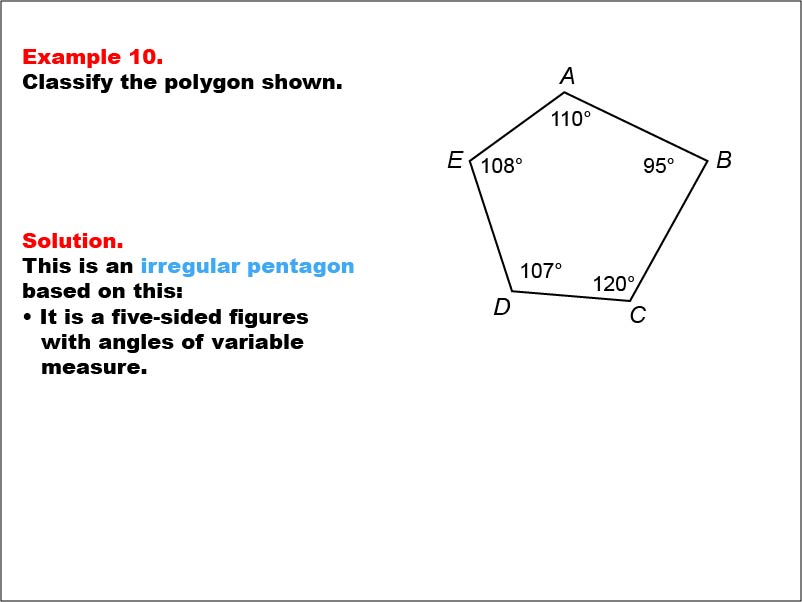
Display Title
Math Example--Polygons--Polygon Classification: Example 10
Display Title
Math Example--Polygons--Polygon Classification: Example 10

Topic
Polygons
Description
This example showcases a pentagon labeled with vertices A, B, C, D, E, where the angles are marked as 110°, 95°, 120°, 107°, and 108°. It demonstrates an irregular pentagon based on the variation in angle measures, highlighting that regularity depends on both side lengths and angle measures.
Understanding polygon classification is essential in geometry as it helps students recognize and categorize shapes based on their properties. This collection of examples emphasizes the importance of both side lengths and angle measures in determining the regularity of pentagons.
Exposure to multiple worked-out examples is vital for students to develop a comprehensive understanding of polygon classification. Each example presents a unique scenario, allowing students to apply their knowledge and reinforce their ability to distinguish between regular and irregular polygons based on various criteria.
Teacher's Script: Let's analyze this pentagon, class. Notice the different angle measures. How do these varying angles affect our classification of the shape? Remember, for a pentagon to be regular, all angles must be equal. Let's discuss why this pentagon is considered irregular and how it differs from the regular pentagons we've seen before.
For a complete collection of math examples related to Polygons click on this link: Math Examples: Polygon Classification Collection.
| Common Core Standards | CCSS.MATH.CONTENT.5.G.B.3, CCSS.MATH.CONTENT.7.G.B.6 |
|---|---|
| Grade Range | 6 - 8 |
| Curriculum Nodes |
Geometry • Polygons • Definition of a Polygon |
| Copyright Year | 2013 |
| Keywords | polygons, classification |